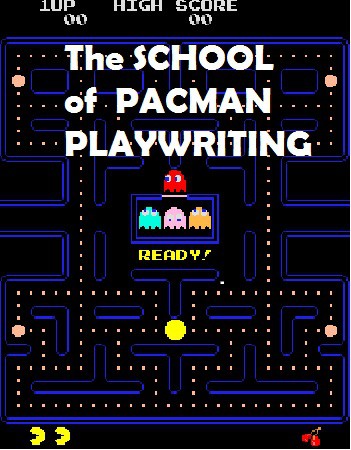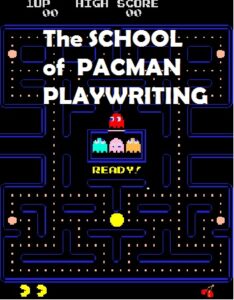This blog was originally published in April 2016.
Would you prefer to watch a hologram of a human, who is beamed from another space, perform with a human actor in a play – or just watch two human actors in the same space in a play?
It’s a skewed question that begs further context, of course. What’s the play? What’s the story? Who are the characters? Is this a piece about the future, about separation, or presence and absence? What’s the overarching artistic aim? From what set of values has that design choice (and it is a design choice, not a casting choice) been made?
I’ve spent a fair bit of my time at IETM experiencing knee-jerk reactions in the face of radical digital innovations, and then waiting for them to settle to see if they’re happening purely on the basis of my taste, or something more dramaturgically solid.
Terminology, I’ve learned, is also part of the answer here. It’s definitely up for grabs. Many people I’ve met here would argue that the hologram is absolutely in the same space anyway, because we’re now in a world of ‘mixed reality’ where the elision between the real and the virtual is almost imperceptible.
Yeah – but if you punch the hologram, its nose isn’t going to bleed.
I think scientifically you could argue that this doesn’t count as being in the same space.
Then again, ‘being’ is completely a contentious term in digital times. If I can ‘be’ on Skype, am I not there in someone else’s space?
Yeah – but again if they punch me, my nose isn’t going to bleed, even if their screen cracks.
I’m not regularly punched by the way. Although I suspect a few digital innovators and philosophers are probably winding their arms up in preparation right now.
I mean, why let a little thing like material presence get in the way of how we think about what’s live? Everything’s live now, because we’re live networked, so let’s start rethinking our notion of the live, okay? Just because somebody isn’t there doesn’t mean they can’t be in the same space… does it?
The Performative Playfulness of Storytelling session brought us together with two game designers who built us a very clear picture of the burgeoning technologies out there, one from a technology perspective, and one from a gaming perspective.
Interesting statistic – the most popular video game in 2012 was Candy Crush Saga – 75.5 million likes, and game players mostly females who were 35+. No more the gawping teenager in front of the console: now the gawping smartphone user in front of their desk, probably procrastinating from doing something else.
As a primer to talking about participatory video game and theatre overlaps, the basic design of video games was outlined: rules dictate that we do hard work to get the rewards.
PacMan is a great early example – the ghosts are there to enforce the rules, and it’s they who create the ‘game’ in PacMan, not PacMan: without the ghosts, there’s no challenge, no work and no feeling of reward in the face of overcoming adversity. You’re just a little yellow face eating dots in a maze.
We looked at the game-play in Ludo too, where gambling, chance and strategy come in, creating tensions that make the game ever-more successful, because the work is harder and the investment greater from the player.
We moved on to player-as-author examples. The video game of Her Story – about a woman talking to the police about a murder, comprises hundreds of clips that can be re-arranged by every player to create a new understanding of the truth of what happened – you solve the narrative in your own way, and then you can upload it to YouTube and share as a film.
And then a more subtle terrain in the game Dear Esther where you walk around a remote Scottish island, the weather and environment changing – not fighting any ghosts or defeating zombies, but simple looking for answers with your intrigue piqued by a letter that you’ve written to a woman called Esther being read on a voiceover.
Then came the holoportation – a Microsoft ‘mixed reality’ VR headset game, where your own body and the landscape of your immediate material surroundings are blended with virtual reality technology, so that robots appear to explode through the wall of your living room and attack your house. The technology can read the space too, and learn, and then change the robot’s tactics accordingly. From PacMan to this – it’s a huge and rapid shift.
The second presentation followed on with a parallel cultural change. By way of illustration, three news photographs of Papal inaugurations were shown.
The first in 1978 in black and white was shown from the perspective of the Pope’s view at the Vatican: he is clear and in focus, his followers a blurred sea of blobby grey faces. In 1995, the news photograph is of the followers, clearly in focus with the Pope somewhere at the vanishing point of the photo, out of focus. At the most recent inauguration, the photograph carrying the story is of a sea of digital screens being held above heads and the Pope totally obscured.
Technology changes the way everybody perceives the world around them, not just how we use technology.
The ethos of gameplay within Minecraft was illustrated: provision of materials with which you can work alone creating environments, or work in a community like the 500 people who’d made a Taj Mahal replica online. There’s a combination of making and playing: the making IS the playing – Lego understood this 30 years ago but coders didn’t.
This ‘pick up and play’ principle drives quickly on to the ‘easy things aren’t fun’ principle. Only hard things are fun. And Minecraft might look ugly and blocky on the screen, but beauty is not part of the attraction – what makes it attractive is being part of it, the challenge of making something incredibly difficult.
Then the moment that’s become synonymous with IETM – after an hour of evidence, the call for an inevitable switch, in the face of all this evidence, that we have to redesign the behaviour of our theatre audiences because it’s clear that nobody just wants to ‘watch, look and listen’ anymore.
I’m fine doing that in a theatre space to be honest, but I’ve just discovered in the last three days that I’m terribly old-school as a result: though gratifyingly, I’m still a game-player. In the theatre, the audience ‘plays the game’ of being an audience and follows the rules: if someone dies, you know that you don’t phone 999.
What I began to wonder at this point was how far the drive for increasing gamification in theatre seemed to be coming from a cultural assumption – that if you view everything in terms of games and play (and as human beings we’re naturally predisposed from childhood to learning via game-playing structures, that’s completely valid), then it does seem to follow that this is an application you can explore in all circumstances, including theatre.
I mentioned this model in the previous blog, but the player’s chain of experiment was then suggested as this:
As a player I have to take an action – then there’s a reflection (what you see is what you get, or something similar) – so then I think ‘okay, I’ll try again with a hypothesis, to then verify if what I believe is true’ – and you take another action, repeating that loop until your understanding of the situation is resolved. This process is replicated in storytelling too.
In a play, the protagonist takes the action, but then it’s then the audience who engage in critical reflection – but they have no control in taking real action on their own hypothesis – only the protagonist can decide this, and then the ‘game-playing’ loop is shut down.
Not a direct quotation, but this is the gist.
Hey guys, ever read Augusto Boal? I think maybe he implemented this system for spectator-players about half a century ago, and turned it into a global political form called Forum Theatre.
So why the second example is now a problem that needs solving for those ‘passive audience members’ (oh hello, them again) that are clearly sitting in their seats, desperate to leap up and grab Juliet by the shoulders shouting ‘don’t kiss Romeo you moron, he’s alive!’ I’m still not entirely clear.
The final provocation before the group Q+A was that:
We need new language and tools to design stories for an audience that understand the world through action.
Um. Didn’t we understand the world through action in theatre before the digital revolution – just the actions of others? Why is our interactivity a more effective means for arriving at understanding in stories than critically reflecting on the actions of others?
The answer given was about learning – that we’re more likely to learn through a hands-on experience, rather than the feeling of katharsis (for example) that we might arrive at through watching Greek tragedy.
I suggested that I don’t go to the theatre to learn – that might be a fantastic additional outcome, but I go to be moved, compelled into thought and emotion, challenged with the problems of human beings making impossible choices of justice that balance on a knife-edge. If you encourage audiences to repeat and repeat the action – reflection – hypothesis – action loop repeatedly, don’t we start to eradicate the dramatisation of problems?
Then the big guns started firing from the floor. What place does the singular craft of the trained artist have in this brave new digital world? Are these new interactive plays going to be performed 300 years down the line, capturing a crucial moment in human evolution? Isn’t it the craft of the artist to manoeuvre audiences towards the questions, experiences and understanding that we desire them to reach simply through imaginative cognition?
Another delegate suggested that the core mechanics of the collective live experience (in plays and dance) is empathy – the power of the narration, in whatever form, to meld audiences with the lives of characters so that we experience through them. We can weep in empathy with the character because we’re watching another person in the situation – that empathetic response cannot happen when you’re being it. It’s not what you feel for yourself that’s important, it’s what you feel for somebody else.
The fair final outcome in the debate was that these gaming layers were simply adding another colour to a palette of artistry: or, our ‘catalogue’ of storytelling options was now bigger, rather than the catalogue itself completely changing.
Five hours later, I’m still processing this conversation.
It felt like we were touching right at the heart of a huge issue in these ‘digital times’ for those who feel in a position where they’re defending the conventional or classical modes of theatrical communication.
To come back to the actor-hologram ‘being’ in the ‘same space’ as the real actor, what we’re attempting to define – and it’s like chasing shadows – is the alchemic power of the corporeal presence of human beings in a shared space.
Why, over 2,500 years of written dramatic storytelling, and thousands of years before that through the oral tradition, do audiences and actors still come together in a material physical shared space to tell a story? Why does that attraction endure, and why does our current digitally-influenced culture demand that the model is now out-dated?
Theatre is poetry. It’s the expression of the inexpressible. I just don’t believe that the core driving force behind it – words being spoken in a space by one group of people to another – is somehow incapable of capturing the experience of living in the digital world of today.
Why should a digital world lead inexorably to a digital theatre?

